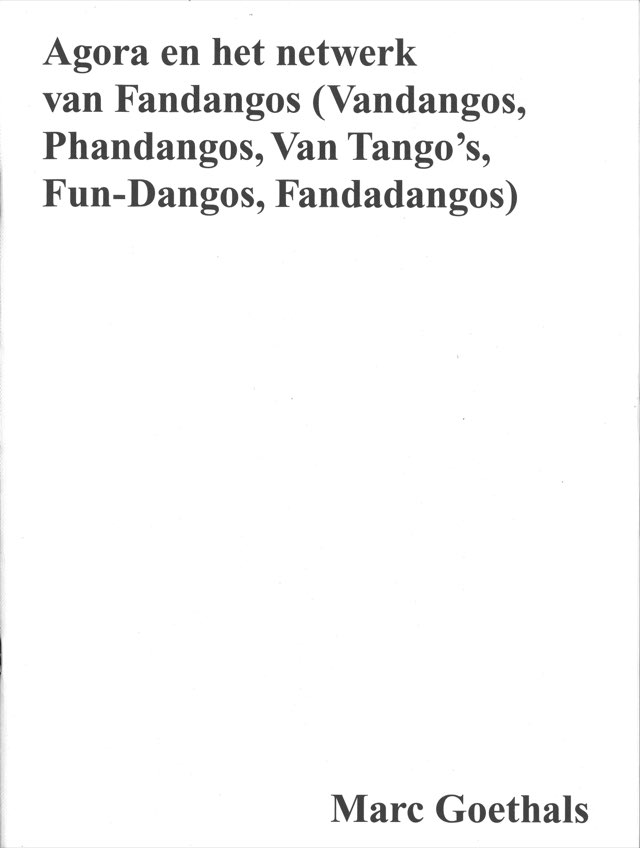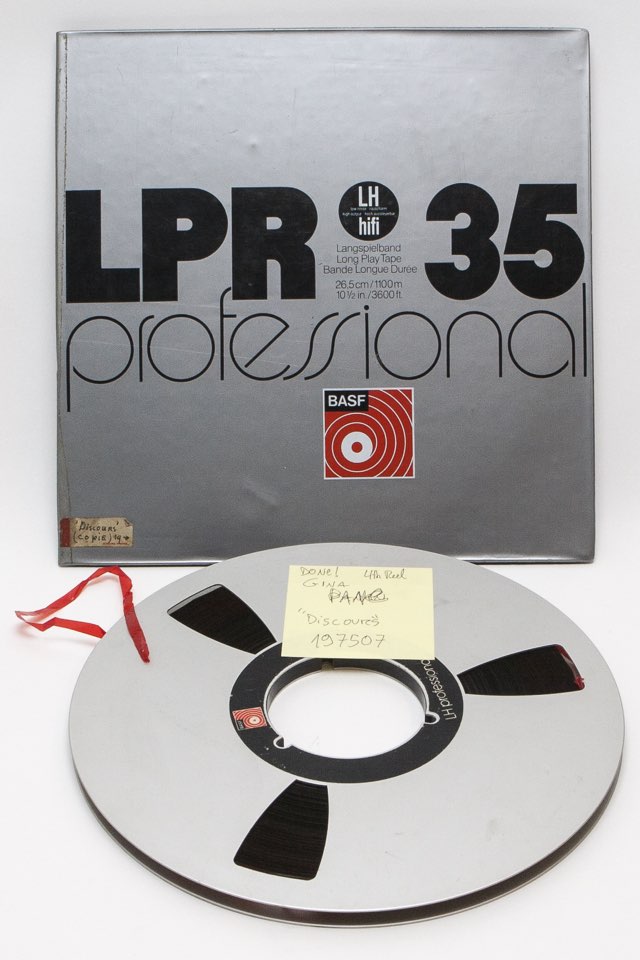Georgia Sagri: IASI, Stage of Recovery
de Appel, Schipluidenlaan 12, Amsterdam
SESSIONS: 28 September – 19 November 2020
EXHIBITION: 23 October – extended until January 18 2021

Installation view of Georgia Sagri: IASI, Stage of Recovery, de Appel Amsterdam, 2020.
Photo: Cassander Eeftinck Schattenkerk
‘While taking care of the breath, the voice starts to sound as it is formed and the whole world starts to vibrate differently. By breathing, singing or talking, the voice travels inside the body, touches the interior organs and colors them through vibration. Some voices, which means some bodies, are under shock; by altering the resonance of the voice, the body starts to vibrate differently, so some of the organs that are in pain will start to recuperate.’
– Georgia Sagri, IASI
The fuller meaning of IASI
IASI (‘recovery’ in Sagri’s native Greek) involves the recovery of health in the physical and mental sense without binary. The deeper, fuller breath of life. At the heart of Sagri’s process are questions so basic that they may have been forgotten: How well do we breathe? How to inhale as fully as we exhale? How to give as much as we take?
IASI also emphasises remembering as part of recovery. For Sagri, this involves the reclamation – in the contemporary world – of a political horizon for performance established within Ancient Greek theatre. For example, at the Epidauros Amphitheatre in the Peloponnese, which rests near the Sanctuary of Asclepius (a god of medicine), we find evidence of the close relation between theatrical roles, civic participation and the beginning of medicinal categories – all of great inspiration to the artist. Indeed, her one-on-one treatments aim to reclaim or remind each person of the sense of the unique strength we each hold deep in our system, which is the basis of readiness for meaningful public encounters.
Sagri’s method addresses physical pain as a symptom of imbalance in (social) life. One that can also lead us to recovery. In a briefing about the progress of her treatments to the team of de Appel in early October, Sagri noted: “Pain is a bell, an invitation to a dialogue with your system.” IASI is this dialogue. What is crucial, is that in speaking with each participant the artist listens carefully to how they sound as much as what they are saying. The sound of the voice is a diagnostic tool that Sagri has been studying and using to its fullest; as it is through sound that the circulation of life-giving breath is perceived. IASI should not be mistaken for psychoanalysis. It is a fully embodied (psychosomatic) process, in keeping with pre-Socratic wisdom: Νοῦς ὑγιὴς ἐν σώματι ὑγιεῖ (healthy mind inhabits healthy body).
About the exhibition
The first element built for the exhibition is a soft stage – a functional sculpture designed by Georgia Sagri especially for the one-on-one sessions of IASI. It is a modular sculpture with versions at Mimosa House in London and Tavros in Athens. While the specific scale of an oversized bed remains constant in all locations, the artist chooses differently dyed fabric to suit each setting. At de Appel, the deep crimson stage rests on top of the existing stage of the iconic Aula at Broedplaats Lely (formerly Pascal College, built in 1969 by Ben Ingwersen). The installation might give visitors a sense of the recovery of this public theatrical space for the purpose of personal strengthening. The perfect acoustics of the Aula further enhance the reclamation of breath and voice that lie at the heart of Sagri’s approach.
Hanging high in the spacious Aula are Sagri’s full-bodied drawings. The charcoal and chalk pastels applied by the artist’s hands record the exchange of information and energy from the one-on-one sessions in Amsterdam. Together with those created from past sessions in London and in Athens, these drawings function as practical memory traces, as “sensorial references” and as scores for the continuing treatments. They can be apprehended as individual images and as a collective.
During the exhibition, materials from the evolving history of performance art dating back to the 1970s, found in de Appel’s Archive, add depth and historical context to Sagri's pivotal practice. As this evocative ephemera enters into a dialogue with Sagri’s modular stage-sculpture and full-bodied drawings. Here, a number of questions arise:
What is/has been the artist’s role in society?
What is/has been the role of the public?
Can we conceive of performance art without a sense of spectacle?
What traditions of theater and/as therapy remain to be recovered?
How do we breathe better together?
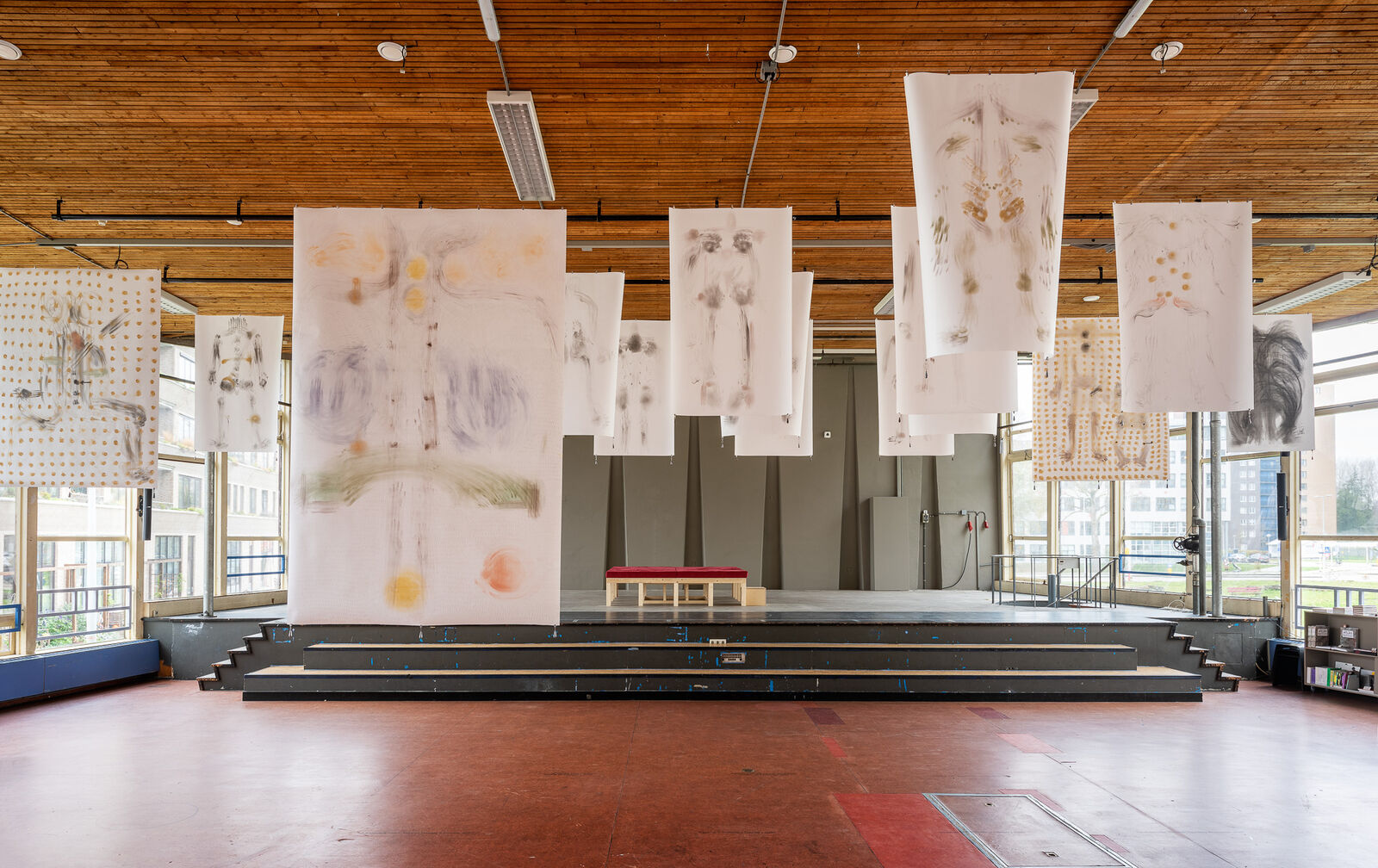
Installation view of Georgia Sagri: IASI, Stage of Recovery, de Appel Amsterdam, 2020.
Photo: Cassander Eeftinck Schattenkerk
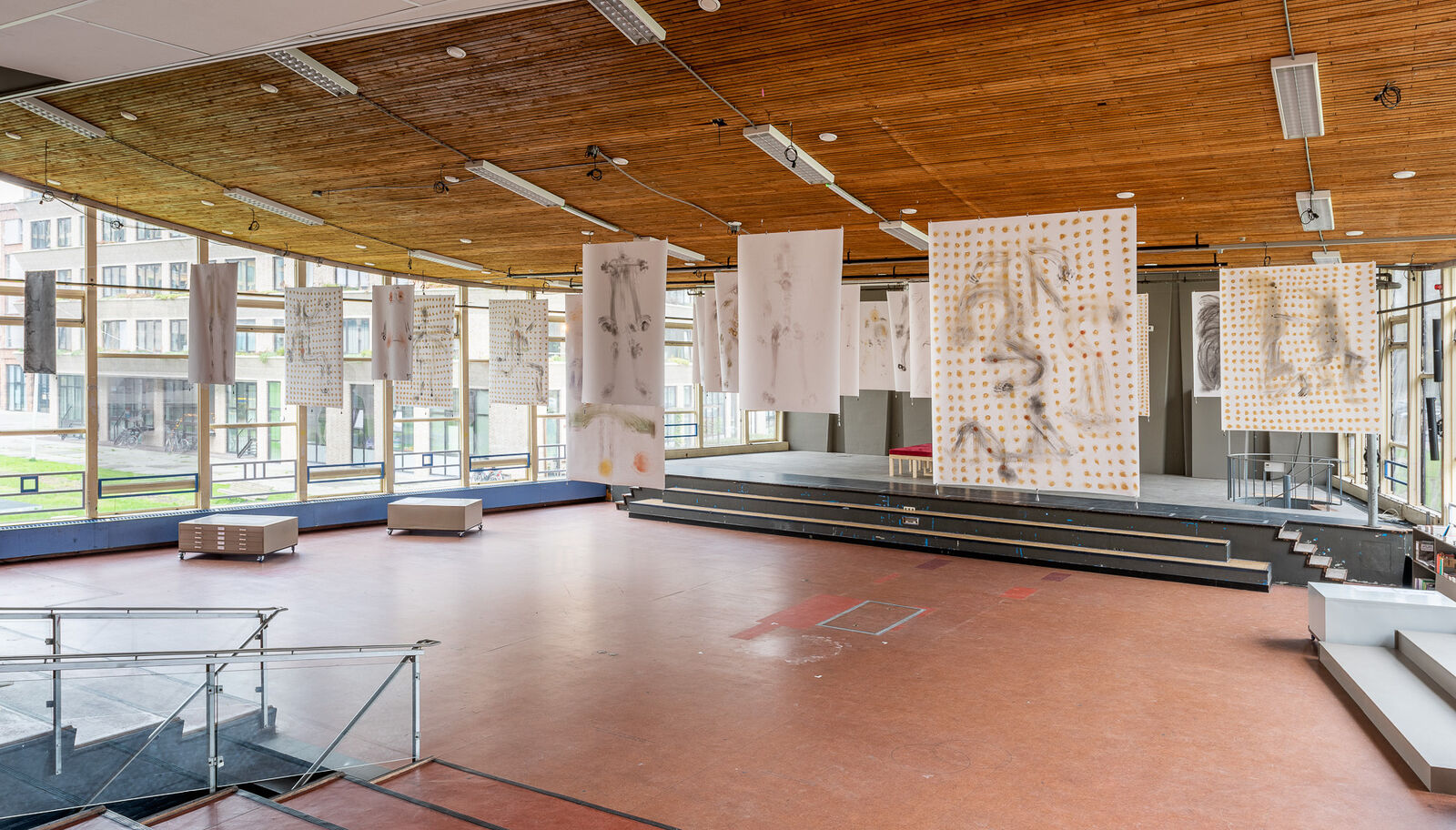
Installation view of Georgia Sagri: IASI, Stage of Recovery, de Appel Amsterdam, 2020.
Photo: Cassander Eeftinck Schattenkerk

Installation view of Georgia Sagri: IASI, Stage of Recovery, de Appel Amsterdam, 2020.
Photo: Cassander Eeftinck Schattenkerk
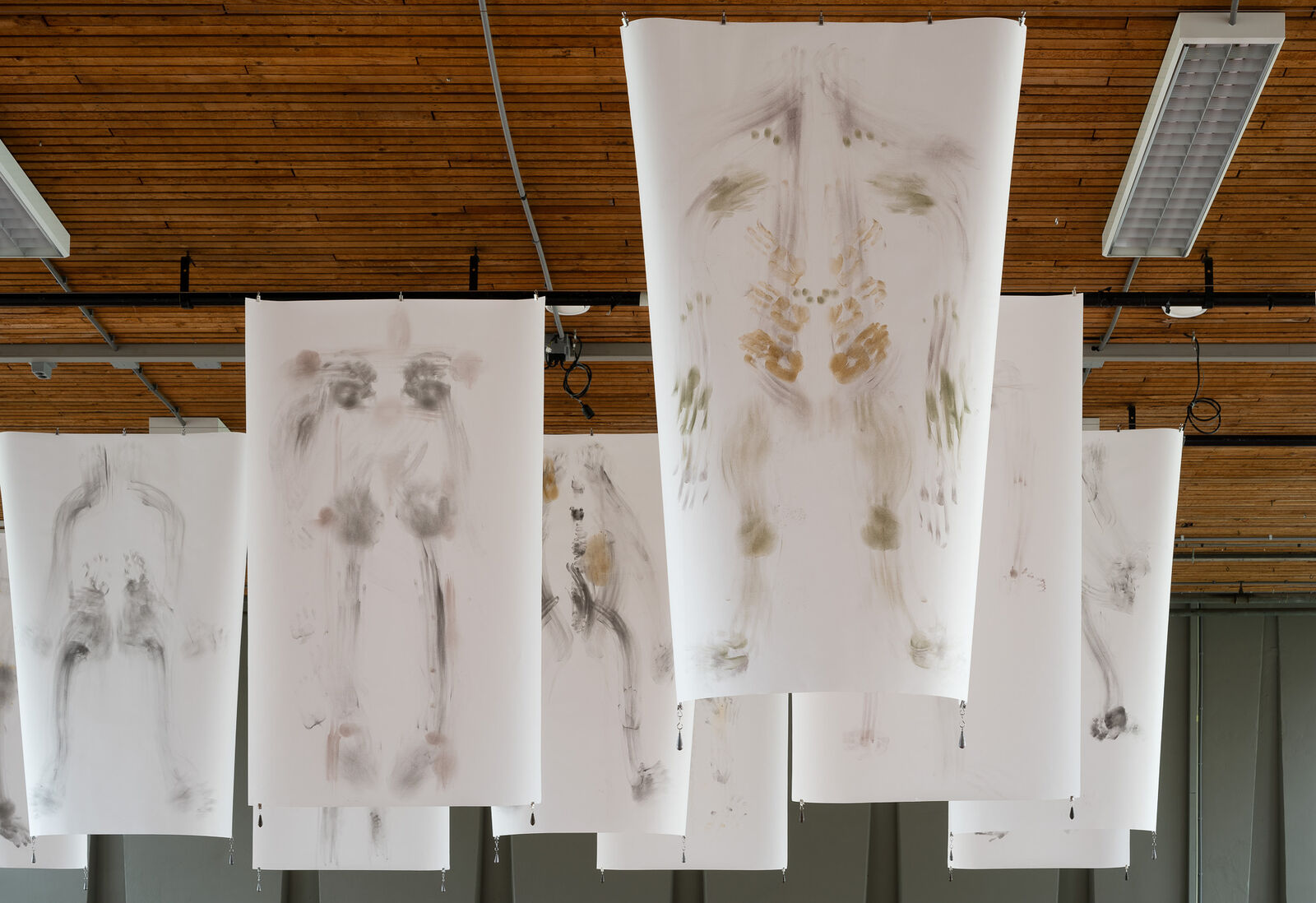
Installation view of Georgia Sagri: IASI, Stage of Recovery, de Appel Amsterdam, 2020.
Photo: Cassander Eeftinck Schattenkerk
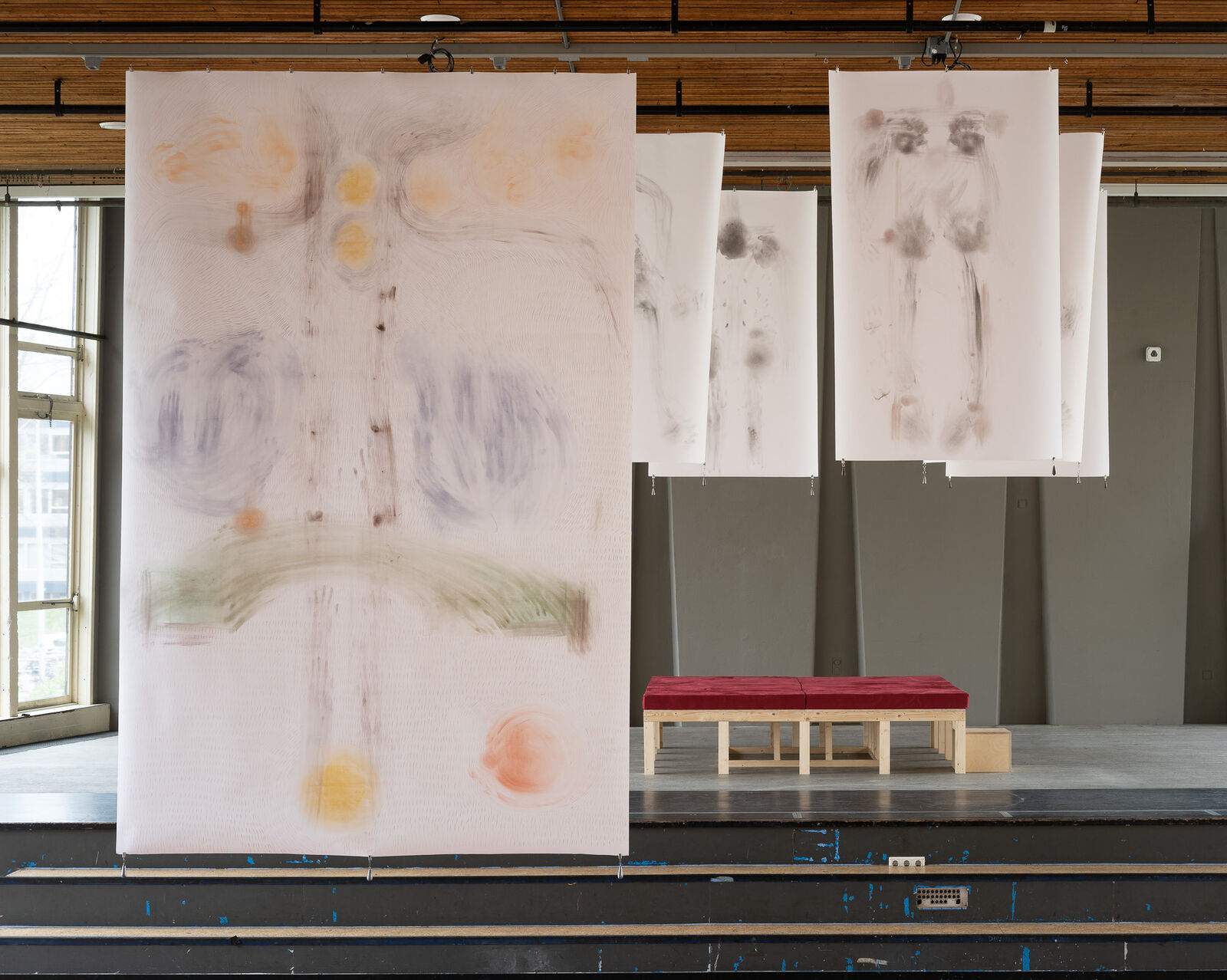
Installation view of Georgia Sagri: IASI, Stage of Recovery, de Appel Amsterdam, 2020.
Photo: Cassander Eeftinck Schattenkerk
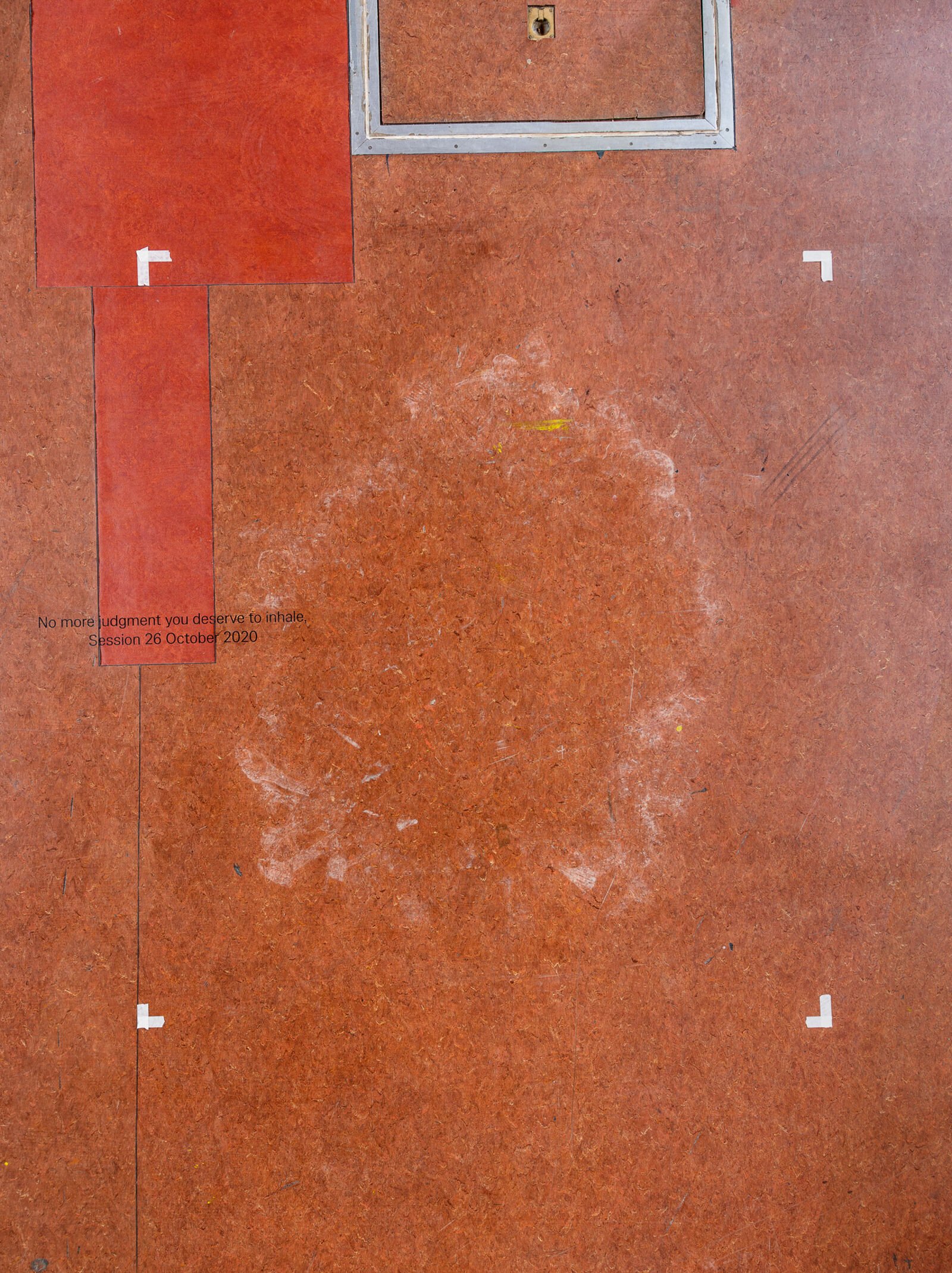
Installation view of Georgia Sagri: IASI, Stage of Recovery, de Appel Amsterdam, 2020.
Photo: Cassander Eeftinck Schattenkerk
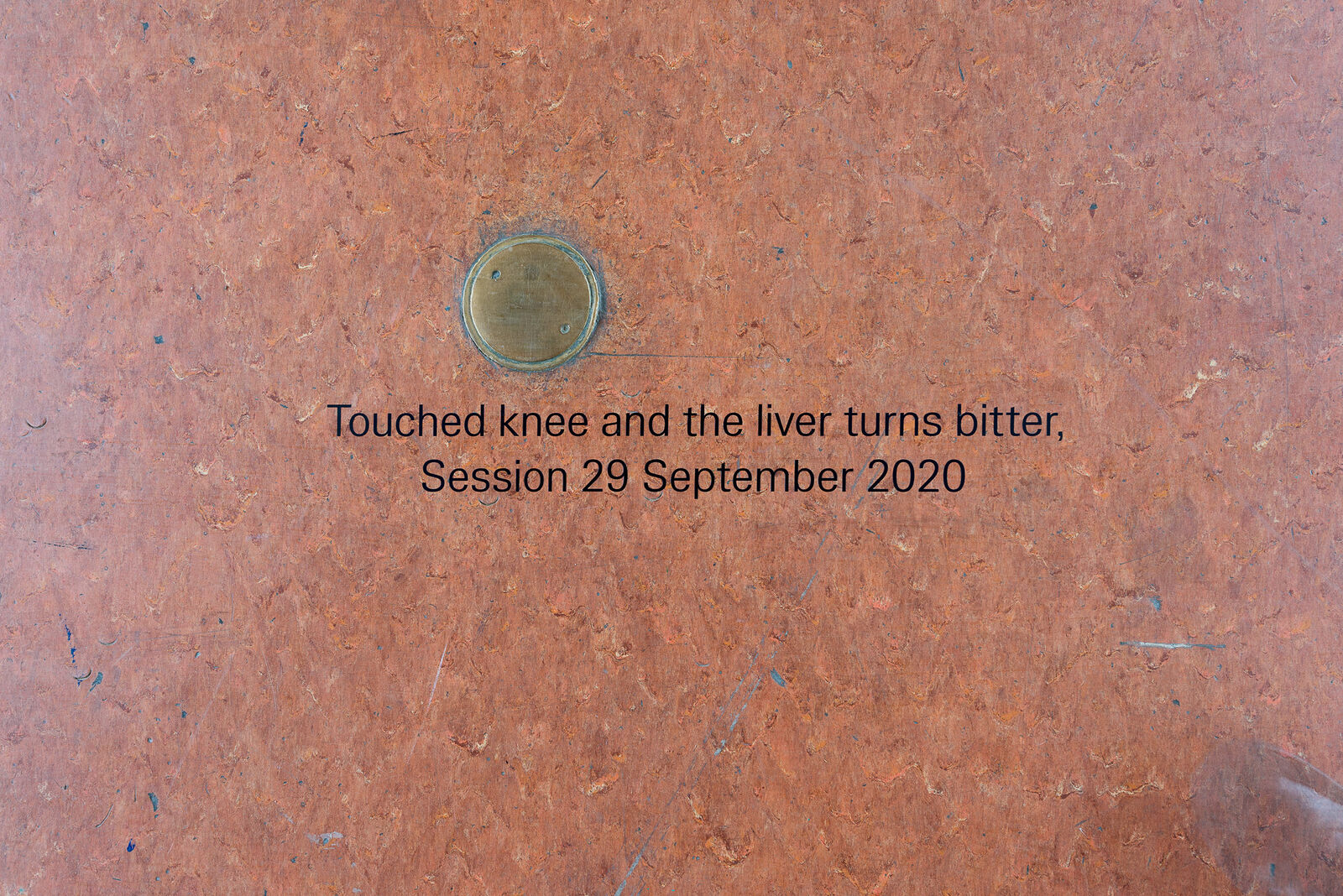
Installation view of Georgia Sagri: IASI, Stage of Recovery, de Appel Amsterdam, 2020.
Photo: Cassander Eeftinck Schattenkerk
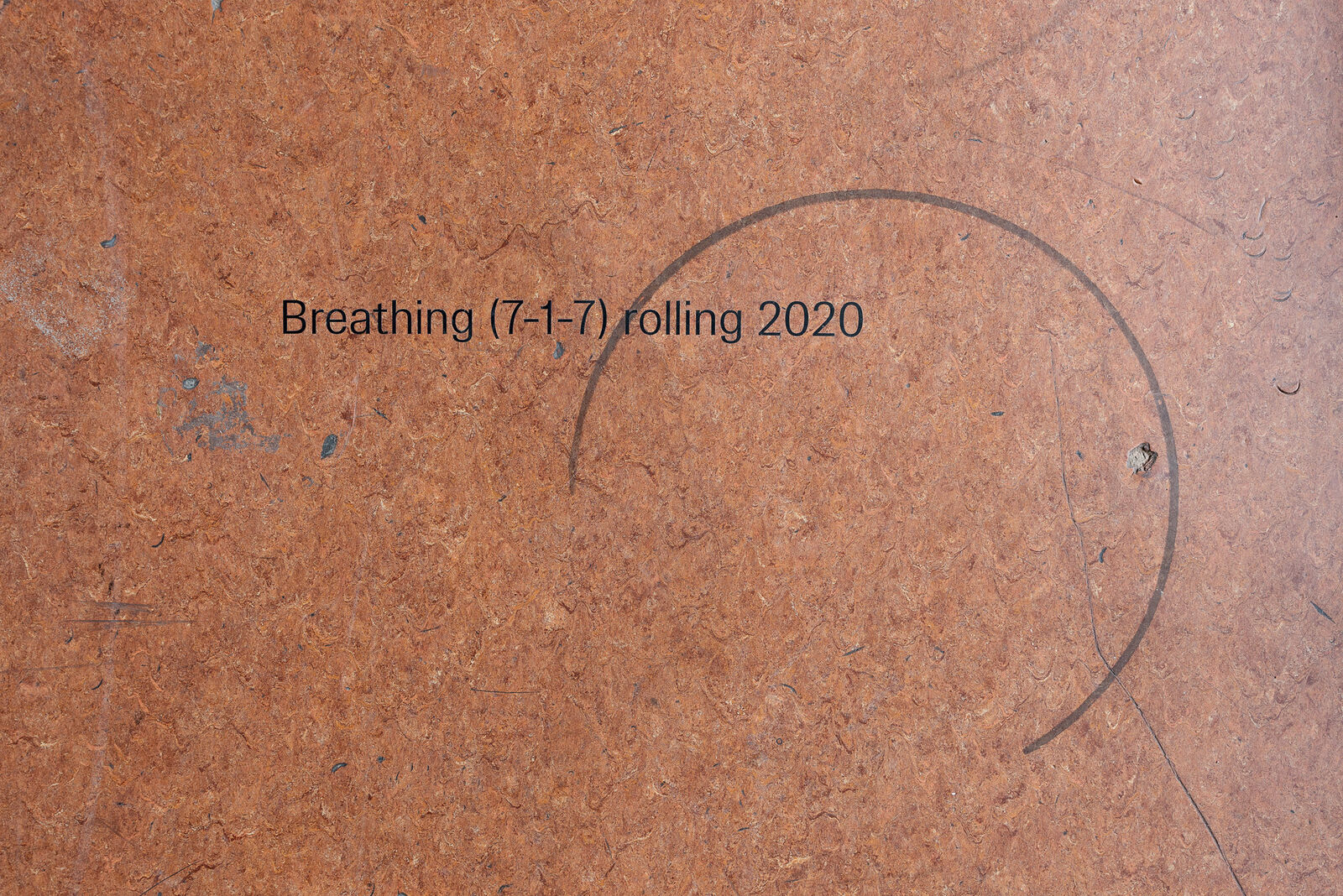
Installation view of Georgia Sagri: IASI, Stage of Recovery, de Appel Amsterdam, 2020.
Photo: Cassander Eeftinck Schattenkerk

Installation view of Georgia Sagri: IASI, Stage of Recovery, de Appel Amsterdam, 2020.
Photo: Cassander Eeftinck Schattenkerk
The Sessions
For the past decade, Georgia Sagri has developed a set of breathing, movement and voice techniques that combine her studies of anatomy, her classical music training, her practice of martial arts and years of experience in performance at the edge of political activism. Initially these techniques prepared the artist herself for powerful endurance performances, which open up new dimensions of the public and private. She began to share her skills with the 200+ people involved in Dynamis, a continuous six-day collective performance that took place simultaneously in Athens and Kassel for documenta 14 in 2017. The form of the one-on-one sessions arose afterwards, from a desire to refine the most effective recovery techniques and to emphasise the unique strength of each person.
Following an open call (sent on August 3, 2020), the artist selected participants in Amsterdam, which she welcomes (September 28–19 November) inside the iconic Aula that de Appel refurbished last year for use as a public presentation space. One of the important criteria for accepting interested participants was their willingness to work together with the artist on their own recovery. Another was that each had a clear reason for entering this rigorous process. While IASI treatments are fully confidential, the artist has developed a system for recording what she learns with each case in such a way that the participants remain anonymous when these findings are shared with the public.

Georgia Sagri, Breathing (7-1-7) with embryac position / Windface [sunset], Performance, 1hr, 24 October 2020, de Appel, Amsterdam.
Photo: Vasilis Papageorgiou © Georgia Sagri
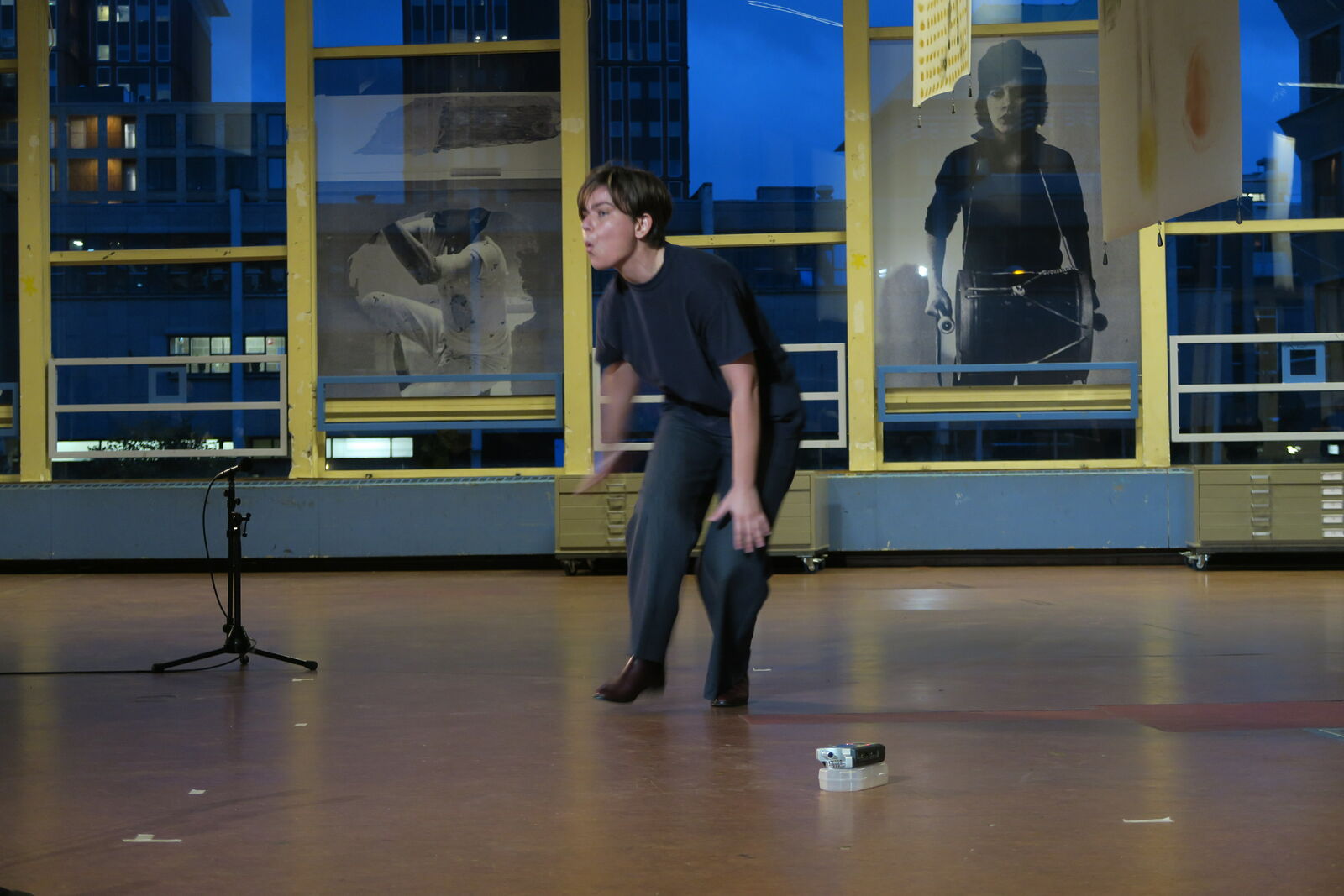
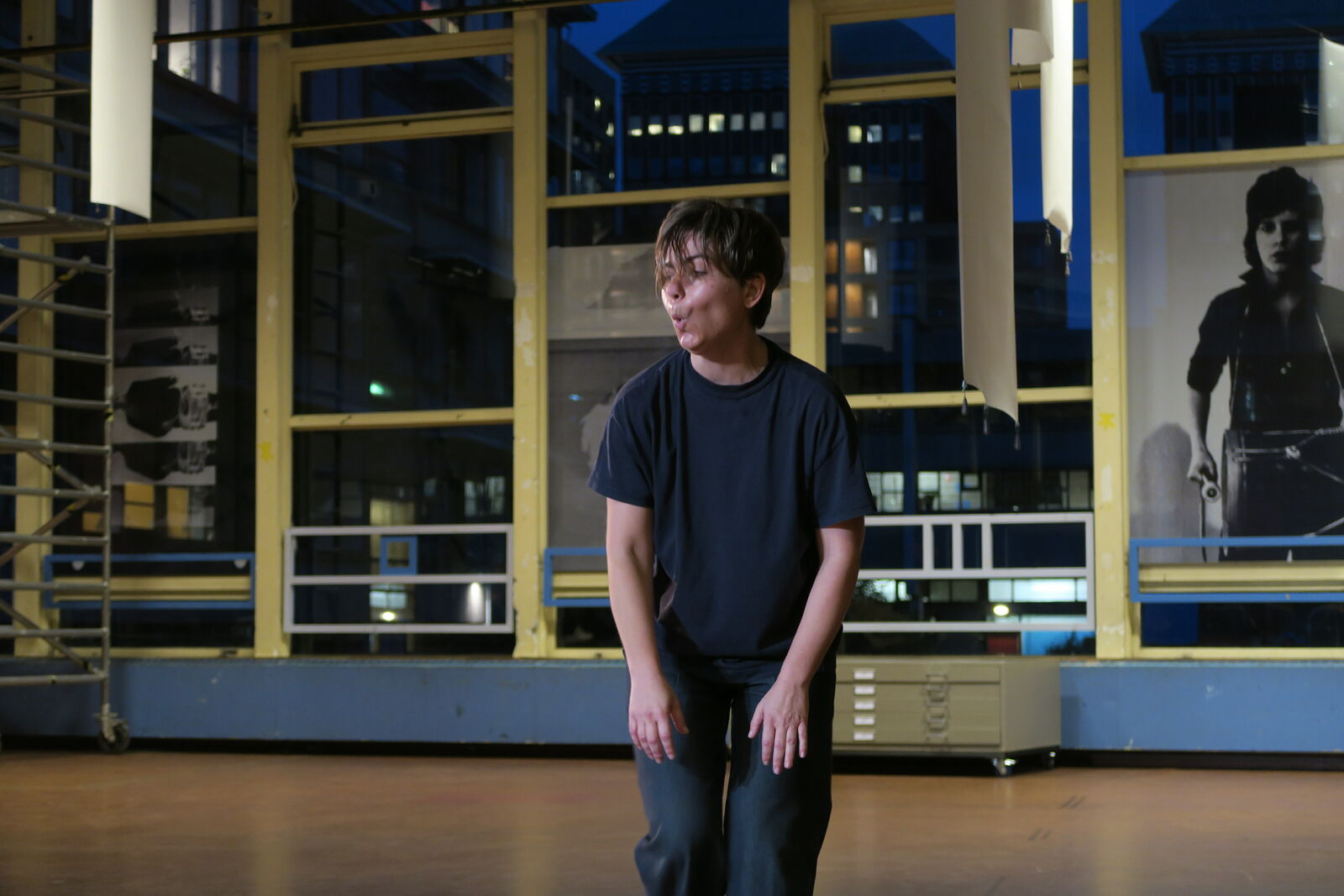
the Artist
Georgia Sagri is currently based in Athens where she was born in 1979 and where she studied formally (at the Odeon Musical Conservatory and the Athens School of Fine Arts, ASFA) and informally (through engagement in the social life of this contemporary polis and its ancient traditions). Following completion of her MFA in Visual Arts at Columbia University, she spent formative years in New York City honing her rigorously innovative approach to art and citizenship via performance. Much of her extensive exhibition history is compiled in her first monograph catalogue published by Sternberg Press in 2018, on the occasion of her solo exhibitions Georgia Sagri Georgia Sagri at Kunstverein Braunschweig, and Georgia Sagri and I at Portikus. Often asked to share her experience in workshops and assemblies – from anonymous anarchist circles to prestigious institutions such as Duke University, the Städelschule in Frankfurt and the Zürcher Hochschule der Künste ZHdK – she has recently accepted a tenured position in the Athens School of Fine Arts, in order to organise and lead the Academy’s first Performance Studio. De Appel’s Curatorial Programme participants of 2020/2021 will take part in Sagri’s inaugural course at ASFA, Fantastic Anatomies.
Events
Friday 23 October 2020 at 6pm CET
BRIEFING
on IASI with Georgia Sagri and the directors of three institutions supporting IASI: Daria Khan of Mimosa House, London; Olga Hatzidaki and Maria Thalia Carras of Tavros, Athens; and Monika Szewczyk of de Appel Amsterdam.
Saturday 24 October 2020 at Sunset (6:25pm CET)
PERFORMANCE
by Georgia Sagri
Breathing (7-1-7) with embryac position / Windface by Georgia Sagri
IASI, Stage of Recovery is curated by de Appel’s director Monika Szewczyk with the assistance of scenographer Ariadne Sergoulopoulou. This exhibition also gains strength from de Appel’s Archive Curator Nell Donkers and Education Curator David Smeulders.
For press enquiries, please contact press [at] deappel.nl
In collaboration with Mimosa House (London), Tavros (Athens) and Georgia Sagri’s foundation Ύλη[matter]HYLE (Athens)
Georgia Sagri’s book Ίαση, Stage of Recovery with the artist’s writings is forthcoming from Divided Publishing(Brussels and London)
21.11.2020 – 18.01.2021, Georgia Sagri participates in de Appel’s special presentation at the Stedelijk Museum Amsterdam, in the context of the retrospective exhibition Ulay was Here.
Supported by Mondriaan Fund, Amsterdam Fund for the Arts and Fonds 21.
The Archival display
As an institution with an archive that highlights the history of performance and the evolution of artists’ social and political roles, from the mid-seventies to the present, the occasion of Georgia Sagri: IASI, Stage of Recovery posed an opportunity to recover key parts of our institutional memory.
Working at de Appel as an intern, the scenographer Ariadne Sergoulopoulou researched through our particular holdings (online and in physical files) based on the four terms derived from Georgia Sagri’s practice at large: Voice/Instrument, Public/Private, Stage/Theatre, Body/ Healing. With Sergoulopoulou’s research and the help of de Appel’s Archivist Nell Donkers, Sagri’s presence comes into dialogue with the presence of Ulay and Marina Abramović, Laurie Anderson, Tiong Ang, Janine Antoni, Ben d’Armagnac, Christine Borland, Waldo Bien & Velimir Abramović, Gerrit Dekker, Pepe Espaliú, Pedro Cabrita Reis, Willie Doherty, Simone Forti, Dan Graham, Andreas Gursky, Julia Heyward, Toine Horvers, Jana Haimsohn, Pieter Laurens Mol, James Lee Byars, Otto Muehl, Gina Pane, Sef Peeters, Allen Ruppersburg, Carolee Schneemann, Doris Salcedo, Thomas Schutte, Sarah Cameron Sunde, Huang Yong Ping and Albert van der Weide, among others. One might ask how these artists treat the very anatomy of the institution.
You will find a plethora of photographs, correspondences, official communiqués and other records inside three large flat file cabinets, and also on the windows which span the east and west walls of the Aula. Note that the photographic film, especially as it is distributed on the windows by the stage, functions as a ‘curtain’ to protect the privacy of IASI sessions from the outside gaze. These materials raise key questions, which we hope to explore with everyone who attends. What does it mean to say that “the artist is the spine of society,” as Saskia Bos asserts through her 1994 exhibition The Spine? Hearing this as we installed, Georgia Sagri responds, “then the diaphragm is the horizon.” With her spine straight, she points to the muscle which expands the ribcage and lungs ensuring the life-giving function of breath as a cipher and instrument of much needed social healing.

Archival display, Georgia Sagri: IASI, Stage of Recovery, de Appel Amsterdam, 2020.
Photo: Cassander Eeftinck Schattenkerk



